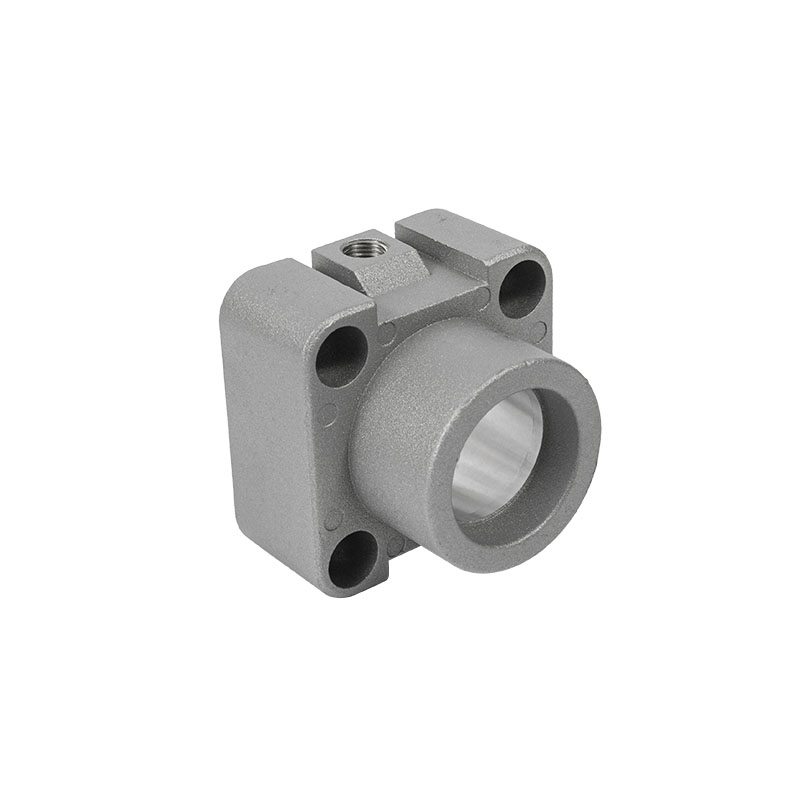Perfecting Elegance: Common Surface Finishes and Coatings Transforming Zinc Alloy Die Casting Parts
2023-12-25
Introduction:
In the intricate realm of die casting, the finishing touches applied to zinc alloy parts play a pivotal role in enhancing both aesthetics and functionality. Surface finishes and coatings not only protect against corrosion but also contribute to the overall visual appeal of the components. In this blog, we'll explore the various types of surface finishes and coatings commonly applied to zinc alloy die casting parts, unraveling the artistry that perfects these precision-crafted components.
1. Electroplating:
- Process: In electroplating, a thin layer of metal is deposited onto the surface of the zinc alloy part through electrolysis.
- Benefits: Enhances corrosion resistance, provides a smooth and even finish, and allows for a range of metallic coatings such as chrome, nickel, and gold. Common in automotive and decorative applications.
2. Powder Coating:
- Process: A dry powder is electrostatically applied to the surface of the part, then cured under heat to create a durable and protective finish.
- Benefits: Offers a wide range of colors, textures, and finishes, while providing excellent corrosion resistance. Popular in applications where a vibrant and durable finish is desired, such as outdoor furniture and automotive components.
3. Anodizing:
- Process: An electrolytic process that forms an oxide layer on the surface of the zinc alloy part, increasing corrosion resistance and providing a decorative finish.
- Benefits: Creates a hard and durable surface, available in various colors, and adds an extra layer of protection. Commonly used in aerospace, electronics, and architectural applications.
4. Painting:
- Process: The application of liquid paint or coating onto the surface of the zinc alloy part.
- Benefits: Offers a versatile range of colors and finishes, allowing for customization. Suitable for applications where specific aesthetic requirements need to be met, such as consumer electronics and appliances.
5. Chemical Conversion Coating:
- Process: The surface of the zinc alloy part undergoes a chemical treatment to create a thin coating that enhances corrosion resistance.
- Benefits: Provides a protective layer without altering the appearance of the part significantly. Widely used in the automotive industry and for components requiring a natural or matte finish.
6. Passivation:
- Process: A chemical treatment that removes free iron from the surface of the zinc alloy part, enhancing corrosion resistance.
- Benefits: Ideal for parts exposed to harsh environments, such as marine or industrial applications. Often used in conjunction with stainless steel components.
7. Chrome Plating:
- Process: Involves the deposition of a thin layer of chromium onto the surface of the part.
- Benefits: Enhances corrosion resistance, provides a high-shine finish, and is commonly applied to automotive components, plumbing fixtures, and decorative items.
8. Tumbling and Vibratory Finishing:
- Process: Parts are placed in a container or vibratory bowl with abrasive media to smooth surfaces and remove burrs.
- Benefits: Improves the overall surface finish, deburrs edges, and can create a polished appearance. Applied to various industries, including automotive and consumer goods.
Conclusion:
The art of surface finishes and coatings elevates zinc alloy die casting parts from functional components to aesthetically pleasing and resilient masterpieces. The versatility in available finishes ensures that manufacturers can tailor each part to meet the specific demands of its intended application, contributing to the enduring allure of zinc alloy die casting in the world of precision manufacturing.



